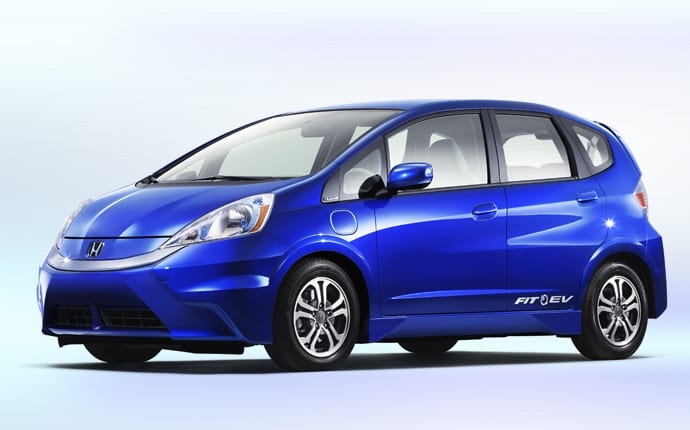
The trouble with keeping electricity prices stable (and relatively low) is inherently connected to demand for power, and one initiative is trialling ways to encourage drivers of electric vehicles to help balance demand on the electricity grid.
In a new electric vehicle charging program formulated by Enel X – a energy innovation-focused offshoot of Italian utility Enel – and Honda, US drivers of Honda’s Fit EV will have the opportunity to get bucks for their bang when they sign up to charge during times of low electricity demand.
The pilot scheme will kick off in Southern California, where Enel X will apply its grid balancing JuiceNet platform to a platform Honda is spearheading there.
Through the Honda SmartCharge program, Fit EV drivers will participate by downloading and signing up to the free HondaLink EV app.
They then create a profile and select their preferred charging times, encouraged by the app to delay or reschedule according to ideal times calculated by the intelligent, cloud-connected JuiceNet platform to balance the grid.

The JuiceNet platform does this by monitoring electricity markets and optimising charging schedules to avoid energy demand spikes at the same time as finding the most affordable times to charge.
An additional bonus of the system is the ability to allow drivers to select charging times when there is the most renewable energy on the grid.
It’s not just the consumers that will win either, but also the energy providers, as the system has the potential to cut utility costs associated with peak power generation.
Once the drivers have completed a minimum of five charging sessions according to the optimised schedule, they will be rewarded with a $US50 signup reward.
Drivers may also receive additional rewards based on their participation in the programme over a two month period.
Initially being rolled out in Edison’s service territory in Southern California, the test programme will then be analysed with a view to include additional EV models and expand into other regions of California, where Enel X already has 7,300 charging stations.
Italian giant Enel has many irons in the fire when it comes to cutting edge energy technology – and all around the world. In Australia, the company’s Enel Green Power this week invested $1.6million in Perth-based Carnegie Clean Energy to encourage the development of clean wave power technology.
While the Honda Fit EV was originally slated for only 1,100 production vehicles per year back in 2013, the company recently stated it would partner with Chinese EV battery maker CATL to ramp up production again in 2020.
Honda has also promised to shift two-thirds of its global car sales to electric cars by 2030, so it’s promising to see the Japanese automaker is already thinking about how to make the impact of the shift to EV a positive one.










